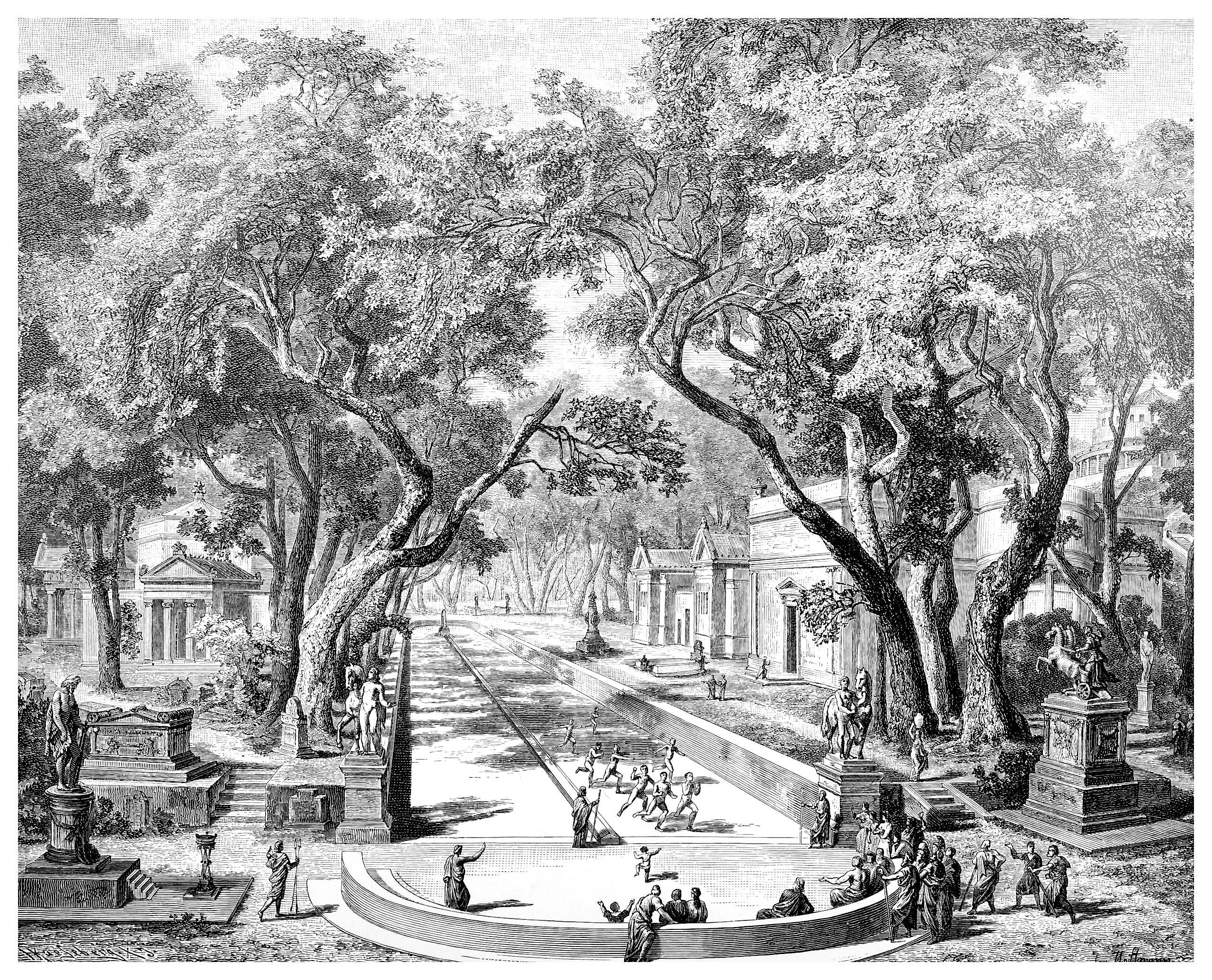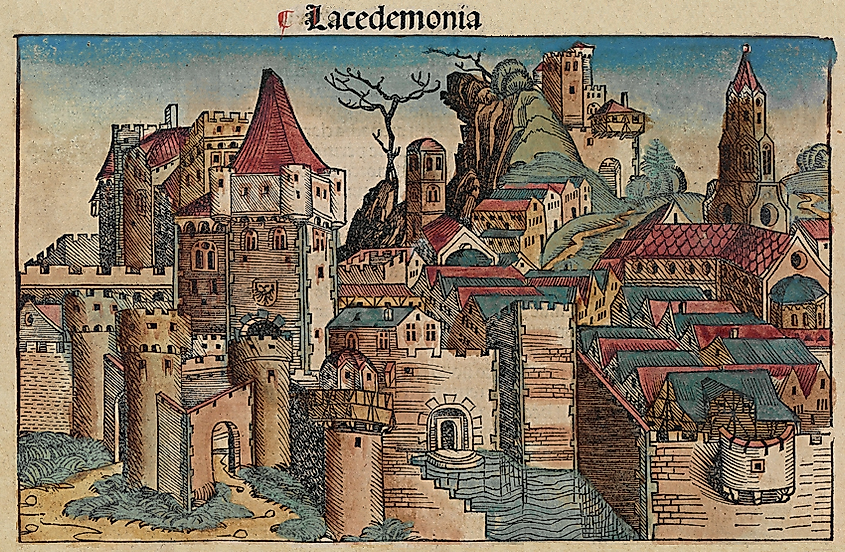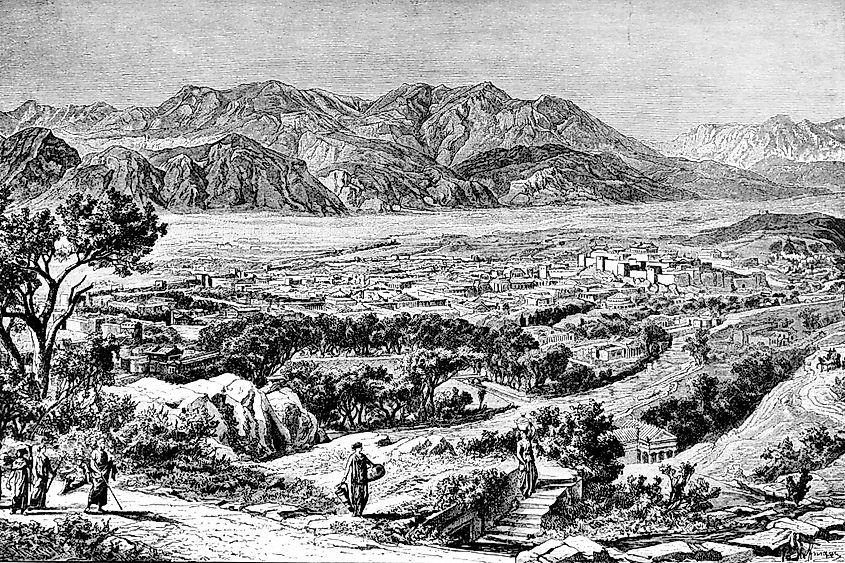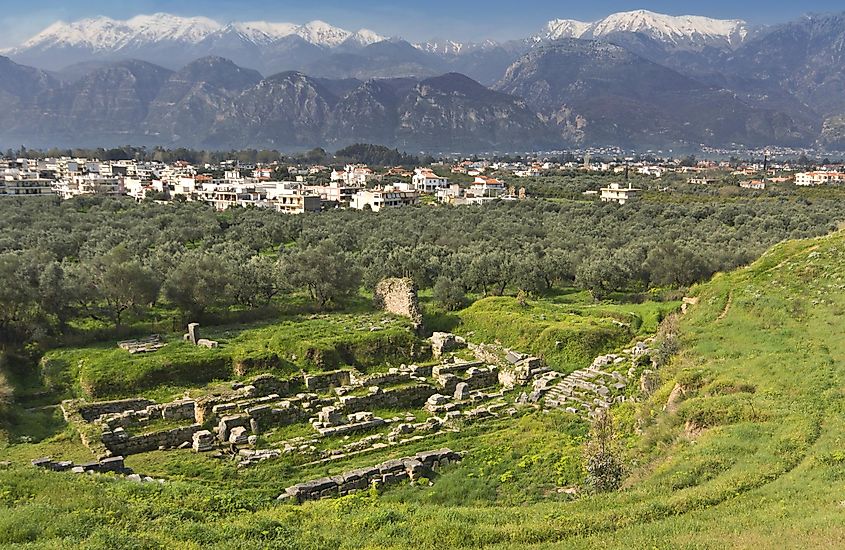
Sparta, The Only Greek City With No Defensive Walls
The Greek Classical Period is, without a doubt, one of the most heavily studied eras of history. The culture of the Greeks is something that was not only admired in their own time but by contemporary humans today. Of all the various city-states and influential regions within Greece, Sparta has managed to capture the interest of millions of people in modern times. Known for its rigorous and hierarchical-driven society, Sparta was a place that lived and breathed war. Both men and women were expected to dedicate their lives to the Spartan war machine in one way or another. It is no wonder why the Spartans are still regarded today as some of the fiercest and brave soldiers to ever live. However, despite its rich warrior culture and constant wars with its neighbors, it surprises many people to discover that Sparta lacked any kind of defensive walls.
Fine Quarters For Women

It was first discovered in 1906 by a group of archeologists that, at its height, Sparta never had walls built around its city. To be clear, walls were eventually erected around 184 BC, but this was long after Spartan power and influence with had faded within Greece itself.
The reasons for this are varied, but historians do have many different theories. The first and most obvious is that the Spartans saw themselves as such superior soldiers to the rest of the Greek people that they never felt threatened enough to build walls. It is a safe assumption that at least a few of Sparta's rulers were content with leaving the city's defense up to a few thousand of its best troops.
Various Spartan aristocrats and nobles have been quoted as saying that a walled city was an affront to any sense of Spartan decency and courage. One Spartan noble once disparagingly described the walled cities of Athens and Corinth as "fine quarters for women."
The Enslaved Helots Made Poor Engineers
Another leading guess on why Sparta had no walls around it was simply because they could not construct them. While it does not take much to build some kind of barricade around a settlement, the massive stone walls of other city-states took incredible amounts of planning and resources. It should be mentioned that other Greeks of that time often remarked on how poorly planned and constructed Sparta was as a city. Visitors often complained that it completely lacked any kind of proper organization and grand monuments you could find in other cities.
Since each Spartan citizen, both man and woman, committed every aspect of their lives to the military, there was little room for those who wanted to become engineers or architects. Every field of work that did not pertain to war was handled by an enormous slave class called Helots.
Making up a majority of the Spartan population, these Helots were treated horrendously, even by the standards of their time. They could be killed without reason and had no chance to work their way out of bondage. They were tied to the land they worked on and often died young from years of back-breaking physical labor. Slavery was still common in Ancient Greece, but the Helots in Sparta were certainly worse off than their compatriots in other city-states. Virtually none of these slaves belonged to any kind of skilled trade and were far from being capable of orchestrating any kind of structure beyond the most basic and common types of buildings.
Geography Strikes Again

The lack of walls around Sparta could also be explained away when considering where the Spartans tended to fight wars and their geographical location. Sparta is located at the very bottom of the Peloponnese Peninsula. A part of the country that is only attached to the rest of Greece by a narrow land bridge called the Isthmus of Corinth.
This land bridge was an easily defensible position that did, in fact, have its fair share of fortified positions that were manned by Spartan soldiers. This part of the nation was even suggested as a rallying point after the inevitable defeat of the legendary King Leonidas and his 300 Spartans at the Battle of Thermopylae.
All of Sparta's potential threats and rivals existed outside of the Peloponnese and would have had to either march a land army through the Isthmus of Corinth or manage some kind of amphibious landing someplace else. Either way, both invading forces in each example would have had to eventually come to blows with the most elite fighting force in the Ancient World.

Why did Sparta not have walls? They didn't really need them. That's why. A lack of immediate threats to the city, paired with a strong military, made it almost impossible for any invading army to take the city easily—walls or not.
Also, the chronic lack of skilled labor, engineers, and citizens capable of completing such a feat prevented the construction of the walls in Sparta. They could have outsourced this job to someone from Athens, for example, but considering how useless the walls would have been once constructed, it made little to no sense at the time and would not have been worth the trouble and effort involved.











